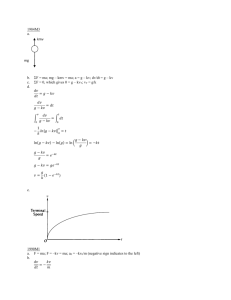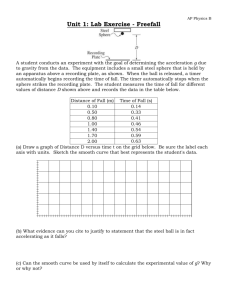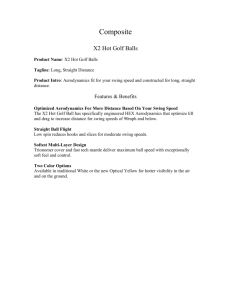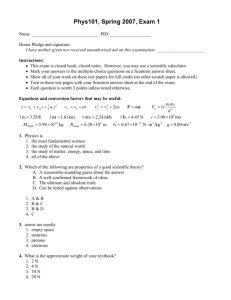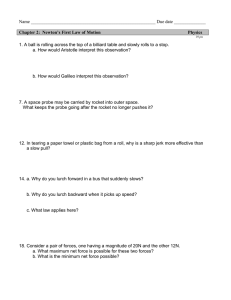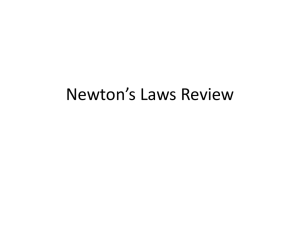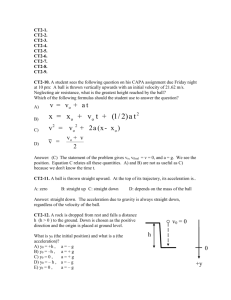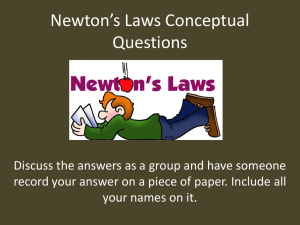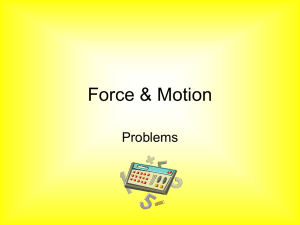How to write a lab report Handout Page
advertisement
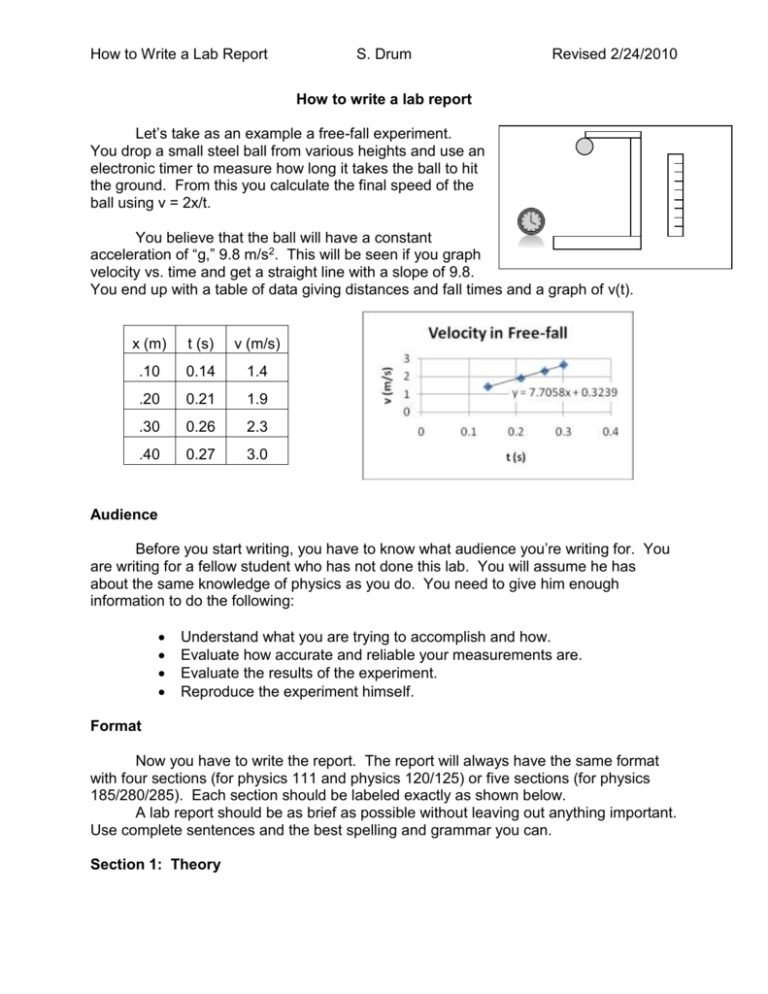
How to Write a Lab Report S. Drum Revised 2/24/2010 How to write a lab report Let’s take as an example a free-fall experiment. You drop a small steel ball from various heights and use an electronic timer to measure how long it takes the ball to hit the ground. From this you calculate the final speed of the ball using v = 2x/t. You believe that the ball will have a constant acceleration of “g,” 9.8 m/s2. This will be seen if you graph velocity vs. time and get a straight line with a slope of 9.8. You end up with a table of data giving distances and fall times and a graph of v(t). x (m) t (s) v (m/s) .10 0.14 1.4 .20 0.21 1.9 .30 0.26 2.3 .40 0.27 3.0 Audience Before you start writing, you have to know what audience you’re writing for. You are writing for a fellow student who has not done this lab. You will assume he has about the same knowledge of physics as you do. You need to give him enough information to do the following: Understand what you are trying to accomplish and how. Evaluate how accurate and reliable your measurements are. Evaluate the results of the experiment. Reproduce the experiment himself. Format Now you have to write the report. The report will always have the same format with four sections (for physics 111 and physics 120/125) or five sections (for physics 185/280/285). Each section should be labeled exactly as shown below. A lab report should be as brief as possible without leaving out anything important. Use complete sentences and the best spelling and grammar you can. Section 1: Theory How to Write a Lab Report S. Drum Revised 2/24/2010 Describe the purpose of the lab. This may be one or more of three things: You are trying to prove a theory. In our case we’re trying to show that the acceleration of a body in free-fall is constant. You are examining a relationship. This is what you do if you don’t have a theory. For example if you measure the time it takes a pendulum to make one swing as you vary the size of the swing, but without having a theory or formula that allows you to make a prediction in advance. You are measuring a quantity, for example the acceleration of gravity. Also give the following: Describe any simplifying assumptions you are making, such as no air resistance or no friction. Give the equations you are using to analyze the data. For our experiment, we are measuring distance x and time t. From kinematics we derive the equation , from which we will get a. This section will usually be brief. Section 2: Procedure You will describe three things in this section: Any equipment you used to make measurements (meter sticks, stopwatches, etc.). This is important so the reader can get an idea of how accurate your experiment is. For our experiment we used an electronic timer and a meter stick. The procedures you used. Don’t go into too much detail. This section should be brief. A drawing may be useful here. Any numbers you determine before starting. This could include weights, dimensions, temperature or any other fixed quantity. Here we might write that we used a steel ball about 1cm in diameter. The range of any independent variables. These are quantities you select yourself. For example, for our experiment, you might say “The height ranged from 10 cm to 40 cm.” Don’t put any values for the time or speed here, since these are quantities you measured experimentally: you didn’t know them in advance. Section 3: Results There are three things that are commonly found in this section: The range of measured values. From our example of dropping a ball, you would list the range of times speeds you measured in this section: “The How to Write a Lab Report S. Drum Revised 2/24/2010 fall time ranged from 0.14s to 0.27s. The calculated speeds ranged from 1.4 m/s to 3.0 m/s.” Descriptions of any trends in the data. Did the data fit a straight line, or some other kind of curve? Give the equations for any computer fit lines. If the data is supposed to be linear, use your eye to judge whether it really fits a straight line or if it curves. (Note: If the data fits a straight line and the line passes near the origin, you can say the quantities being graphed appear to be directly proportional.) Comparisons of measured values with expectations or theoretical values. For example “Our measured value for “a” was 7.7 m/s2, compared with the book value g = 9.8 m/s2, a 22% difference.” There shouldn’t be anything controversial in this section. Anything that involves an interpretation or speculation should go in the next section. Section 4: Conclusions If you were trying to prove something, did you? How well does your data support the theory? There are three common answers responses to these questions: If your data matched the theory, the answer is yes. This means that you results matched the expected results within the limits of uncertainty of the experiment. It means that any trends you observed were as expected. Sometimes the data does not support the theory. If this is the case, be clear about how. For example, “The data showed a direct proportion between speed and time, but the acceleration value we obtained was 22% below the theoretical value.” Finally, you may get data that supports your theory within a certain range of values but deviates from it outside this range. For example, “The graph of v vs. t was a straight line up to a speed of 250 cm/s but curved downwards for higher speeds.” If your theory is not supported by your data, you may speculate on why not. Keep in mind, though, that “human error” is usually a bad explanation unless you know specifically of something you did incorrectly that you couldn’t fix. Discuss any weaknesses in the experiment and how they might be improved. Section 5: Error Analysis (Physics 185 Only) In this section you discuss the accuracy and validity of your experiment. You will include the handout, which will be different for each set of labs. You need to list any significant sources of uncertainty in the values you measured directly (the raw data). You need to give uncertainty values on the final results. You need to discuss how you might reduce your uncertainties or improve the experiment. For physics 120, there will be no section 5. List any significant sources of experimental uncertainty in section 4.
